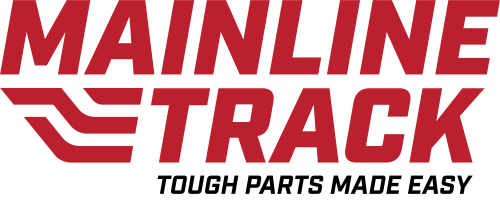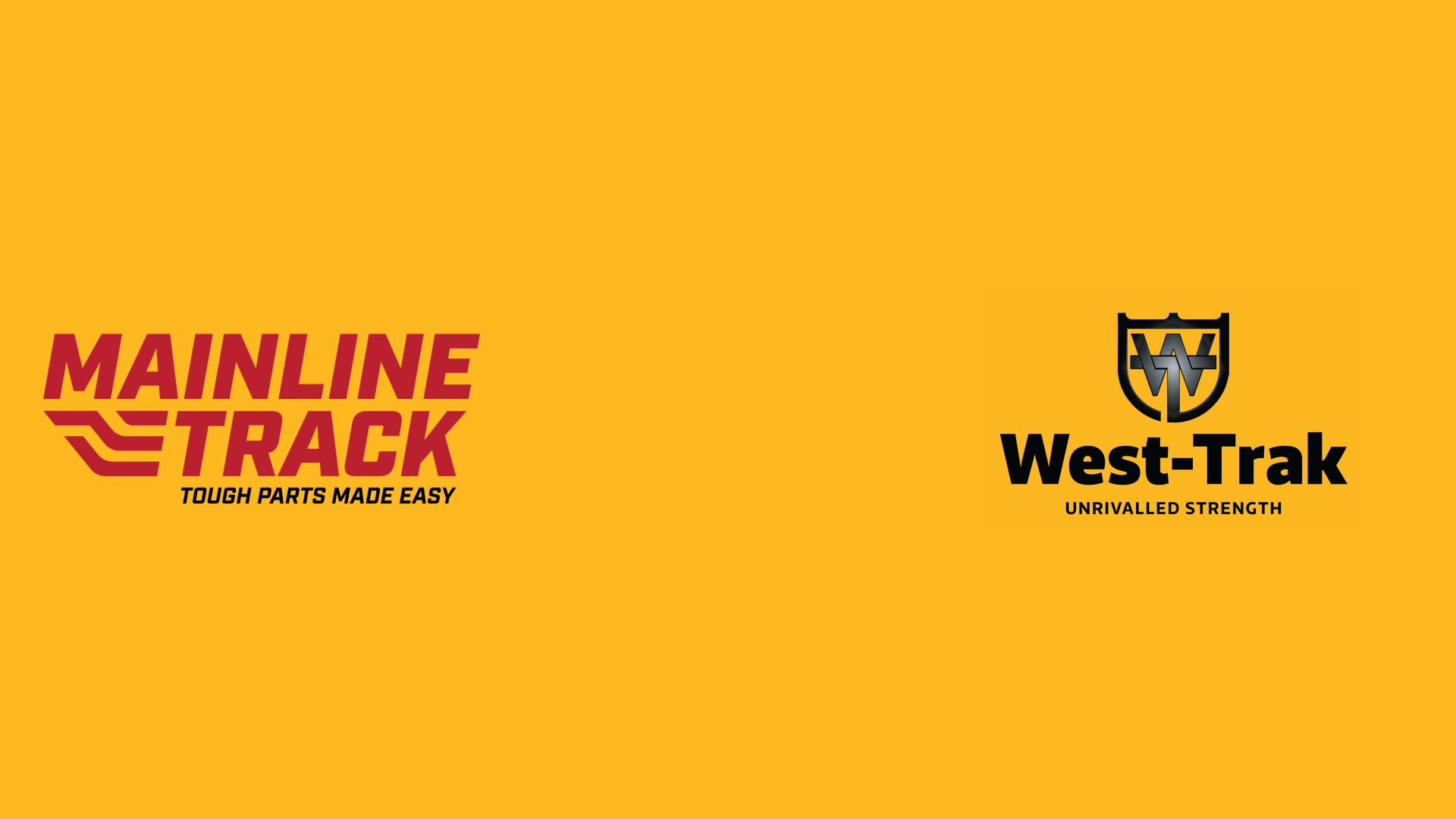CHAINS & GROUPS
We stock a complete range of tracks and track groups to service machines up to 100 Tonne. They can be customised with our 1 or 2 or 3 bar grousers and up to 900mm long. To reduce customer downtime, we have ready assembled track groups up to 30T and where your machine is on street work, we have 3 different styles of rubber pads to support this type of activity on machines up to 45T. Our innovative products are all about removing wear part frustrations and making it easy for you to focus on the job in hand.
Our Range
Quick Quote Product Selector
Choose a Brand
Choose a Model


Track Chains



- TUFF Superseal® is a revolutionary product with a unique and patented seal made in New Zealand that is assembled into an OEM chain. Winner of the Bronze Stevie Award 2021 for Product Innovation, the unique Tuff Superseal® design reduces internal wear providing assurance on zero seizing, 30% longer chain life and no internal wear. Grease is installed into the pin cavity by vacuum ensuring 100% grease capacity, these really are the Rolls Royce of Chains. These chains excel if you are in steep country or doing a lot of walking and give our NZ operators performance in excess of OEM. Now supporting excavators up to 45 Tonne!
- DOZCO make for original equipment manufacturers across the world, they are outstanding in quality and performance. With all raw materials made from virgin Indian steel, this product is built for the world’s harshest conditions. Their unique process of machining all bushes from solid steel optimises the hardness and strength which eliminated any premature wear.
- VemaTRACK is a Dutch company globally recognised for its consistent quality at an affordable price.









Are Our Track Links Greased?
All our chains from 154mm pitch and up (9ton +) are greased and sealed guaranteeing longer service life than the unsealed type. The advantages of sealed track links are:
- The seals prevent soil infiltration and keep the grease in the track links.
- The grease is vacuumed in at assembly ensuring most of cavity is filled with grease.
- There is minimal play between the pin and the bushing, thus preventing premature wear.
The Tuff Superseal® option is all the above and adding the benefit of innovative seal greatly reducing the risk of seizing and premature internal wear.
How Can You Recognise the Wear Patterns of Track Links?
A track link is worn when there is so much play between the pin and the bushing that other undercarriage components start to wear. An increase in pitch creates more play between the pin and the bushing. This makes the inside of the bushing oval and the pin becomes thinner, because it rubs against the bushing wall. This makes the track link longer. You can recognise an increase in pitch by the following visible characteristics:
- The points of the sprockets or segments become sharp, this is a sign that the track link no longer runs in line with the sprocket hollow due to an increase in pitch.
- The front idler wheel and side arms become visible from the frame housing.
- The spaces between each track shoe open up.
- Measure the track pin centres over 4 x pitch over 5 Pins, give us a call, and we can advise on how much wear is remaining.
- If the bushes have worn through to the pins, this is an extreme case of wear and certainly time to replace.
Why do my Digger Tracks stretch?
Excavators these days are doing much more traveling than they were initially designed for causing higher wear on tracks.
I’m guessing something like this happened: You held out as long as you could until you had no other option but to replace them because by then they were totally flogged. As a result, you had to let go of some of your hard-earnt cash at the totally wrong time. The fact is next time you won’t need to so let me explain:
55% of chains that contractors come to us with still have plenty of life left in the rail itself. Often the seal will fail early allowing foreign materials into the grease cavity becoming a grinding paste. This wears the pin and bush internally allowing the chains to stretch therefore the pitch changes and will not sync with sprockets which will then cause external wear on bush and sprockets. Once this process starts happening, you won’t have much life in the chains even if the rails are in good condition.
Our Tuff Superseal® chains meet this head-on. They have a special internal seal that can withstand 5000Kgf of pressure without losing its shape. That’s nearly 3 times more what a ‘normal’ excavator seal can handle. With Superseal® you can expect a chain that:
- Does not seize
- Will not Stretch
- Wears slowly and evenly at the same time as the externals
- Maximises your chain life to 100% wear instead of 45%
Why do my Digger Tracks Seize?
Seized chains are the most frustrating thing you can experience and can happen on a near new machine.
The main reason is water bypasses the seals into grease cavity and reacts with the grease, forming a black gunpowder material which locks the joints, sometimes called arthritis or bunching up.
There is very little you can do about this once it starts happening, the cost to fix can be enormous, and it is sometimes cheaper to put a new set on. In bad cases, if the operator continues to use without fixing, it will do damage to the drive motor.
Will it happen again? Not with the new Tuff Superseal® chains we have developed to meet this head-on.
It has a special internal seal that can withstand 5000Kgf of pressure without losing its shape. That’s nearly 3 times more what a ‘normal’ excavator seal can handle. With Tuff Superseal® you can expect a chain that:
- Does not seize
- Will not Stretch
- Wears slowly and evenly at the same time as the externals
- Maximises your chain life to 100% wear instead of 45%
Track Groups



Track groups can be customised with 1,2 or 3 bar grousers up to 900mm long. To reduce customer downtime, we have ready assembled track groups up to 40 tonne and full range available up to 100 tonne on indent.









How to tension your tracks on an excavator?
Note: Keeping the track properly adjusted will increase the service life of the track and drive components. The track tension must be adjusted according to the current machine operating conditions. Keep the track as slack as possible if the soil is heavy.
1 – Slowly raise the chassis with the boom and arm. During the operation, operate the machine control levers slowly.
2 – Measure the clearance between the bottom of the track frame and the top of the track shoe (Clearance A) from a safe position even if the chassis should come down. Clearance B is identified as the clearance between the tread of the centre track roller and the tread of the track link.
3 – Clearance A is generally set so that clearance B becomes the value from 60 to 100 mm (2,36 to 3,93 inch) for small and medium hydraulic excavators, and from 100 to 150 mm (3,93 to 5,90 inch) for large hydraulic excavators. Refer to your machine Operation and Maintenance Manual for the correct track sag values.
4 – If the track tension is not at the standard value (which may be found in the operators manual), lower the machine to the ground and turn off the engine and adjust track adjuster to the required value.




Which way around to fit your tracks
If your track isn’t installed around the right way, you’ll lose traction and wear the chains out significantly faster.
The open end of the chain or the tongue on the shoe that rolls down goes under the bottom rollers and over the sprocket.
Sitting on the machine looking at the top of the track the tongue of the shoe must be facing to the front of the machine. For excavator it’s the idler end.
Driving techniques to extend track life
- Avoid Excessive speed, especially in reverse as this accelerates sprocket and bushing wear.
- Avoid travelling long distances without stopping as oil temperature in Rollers can overheat which will cause failure.
- Always dig over the idler where possible, digging over sprockets puts excessive pressure on the bush which can cause premature bush failure.
- When traveling uphill the sprocket should be on the downhill side.
- Maintain correct tension on tracks, refer to manual.
How to Bolt Up a Track Group
Stage 1 | Unroll the Chain
- First begin by unrolling the chain.
- Put the Master Pins aside.
- Once this has been done it may have kinks in it, if so, you will need to flatten it out. (The reason you have to flatten it out is because when you come to sit the shoes on the chain the bolt holes wont line up)
Stage 2 | Preparing the Chain
- The chain will be sitting with the bolt holes down after completing stage 1
- Turn the chain over and sand the surface on which the shoes will sit on with a sanding disc preferably around 36 grit. See picture below.


Stage 3 | Prepare the Shoes
- Begin by placing the shoes upside down on the chain.
- Sand off the paint, so that there is a clean metal strip where the chain will sit. (The objective of sanding, is to remove the paint so it is metal on metal)
- Once all shoes have been sanded, flip them over and line up the holes, be sure the shoes are on around the right way. The edge with 2 Lugs cut out go to the widest part of the chain link.
Stage 4 | Bolt up
- Start by oiling the bolts with lube spray, and put them through the holes
- Install the nuts the correct way, (rounded corners to chain face) Then tighten the nuts on low air pressure or with battery rattle gun.
- Check on the chart at the bottom to what torque it needs to be tightened to and set up the torque wrench to the right settings.
- Adjust air to the right pressure by doing up a few and checking it using the torque wrench.
- Once the air pressure is right, proceed in doing up the rest of the bolts. Never tighten up one side first, always tighten to the number sequence shown in the picture below.


- Once completed, mark every 10th bolt, and check their torque.
- If you find some are lose, re-tighten them all. Once they are all tight you have finished.
Torque Settings:


Explore our other product ranges


Rubber Tracks


Excavator Undercarriage


Rubber Pads


Agricultural Tracks


Augers






